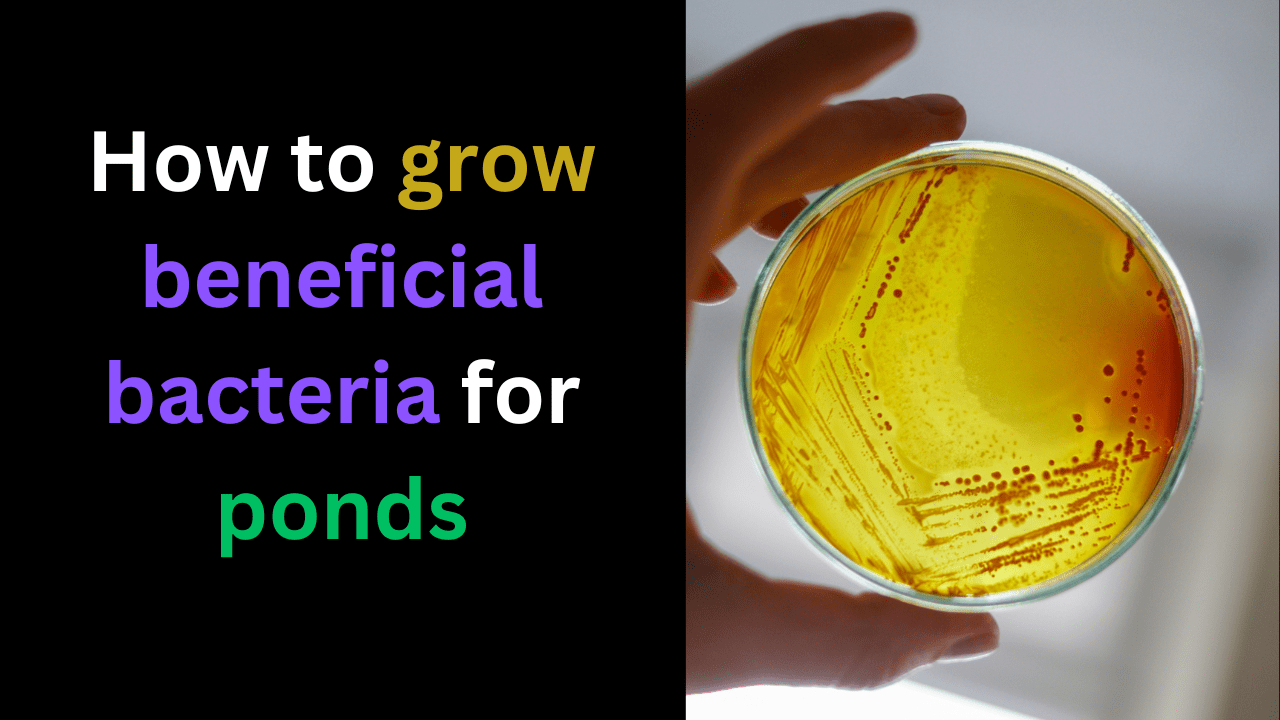Growing beneficial bacteria for ponds is a great way to improve water quality, control algae, and support aquatic life. These bacteria help break down organic waste, convert harmful ammonia into less toxic substances, and maintain a balanced ecosystem.
Here’s the KEY STEPS for cultivate beneficial bacteria in your pond.
Create a Suitable Environment for bacteria growth
Beneficial bacteria grow in specific conditions such as,
- Temperature: Most bacteria grow best in temperatures between 50°F and 85°F (10°C to 29°C).
- Oxygen: Aerobic bacteria need dissolved oxygen. Ensure your pond has proper aeration using an air pump, fountain, or waterfall.
- Surface Area: Bacteria attach to surfaces like rocks, gravel, and bio-media in filters. Adding these materials increases the available area for colonies to grow.
Maintain Proper Water Chemistry
Beneficial bacteria require stable water parameters:
- pH should be between 6.5 and 8.0.
- Ammonia, Nitrite, and Nitrate: Bacteria help process ammonia (NH₃) into nitrites (NO₂⁻) and then into nitrates (NO₃⁻), which plants can use. Avoid chemical imbalances by testing water regularly.
- Ensure the water is dechlorinated before adding bacteria, as chlorine and chloramine kill them.
Provide Organic Material
Beneficial bacteria feed on organic waste such as decaying leaves, fish waste, and uneaten food. Maintain a moderate level of this material to sustain the bacteria without overloading the pond.
Install a Biological Filter
Biological filters are designed to house beneficial bacteria. Media like ceramic rings, sponges, or bio-balls provide a high surface area for bacteria to grow and process water efficiently.
Avoid Harmful Chemicals
Avoid using antibiotics, algaecides, or pesticides in or around your pond, as these can kill beneficial bacteria.
Regular Maintenance
- Clean the pond of heavy sludge or debris but leave some organic material to sustain bacterial colonies.
- Test the water regularly to ensure bacteria are effectively breaking down waste. If ammonia or nitrites spike, it might indicate an imbalance or the need to replenish bacteria.
Enhance Growth with Substrates
Some natural additives like barley straw or aquatic plants can encourage bacteria to thrive by providing a natural substrate or by competing with algae for nutrients.
Sunlight and Shade
While bacteria themselves don’t require sunlight, balancing the pond ecosystem with partial sunlight can prevent algae overgrowth, which can compete with bacteria for nutrients.
